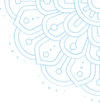India is the second most populated country worldwide, thus signifying the importance of manpower in the country. The Government runs and launches several community schemes for the further well-being and development of fellow citizens in respect of healthcare, sanitation, food, etc. two such beneficial schemes include the Ayushman Bharat Yojana and Pradhan Mantri Matru Vandana Yojana. Each of them is different in their individual approaches and working strategies. In this article, we will be highlighting the key differences among them.
Ayushman Bharat Yojana
Ayushman Bharat Yojana is one of the largest government-sponsored health insurance schemes. This exclusive health scheme has been specially crafted for covering over 50 crore Indians, who always remain deprived of basic health coverage facilities. It was launched by the Prime Minister of India back in 2018, and it is currently active under the name of Pradhan Mantri Jan Arogya Yojana (PMJAY).
Eligibility Criteria for Rural Areas
Under the following circumstances, you can avail of the benefits of this scheme:
- Rural families without any adult family members between the age group of 16 and 59 years.
- Rural families who are living in a single room with kachha roofs and walls.
- SC/ST families
- Tribal groups
- Destitute individuals
- Landless households
- Any individual living on alms
- Released bonded labourers
- Families with a minimum of one disabled member
- Manual scavenger families
- Families without any able-bodied adult family member
Eligibility Criteria for Urban Areas
Under the urban areas, the government has identified eleven work categories, based on which the individuals can avail of the benefits of this scheme. Such occupational categories include plumbers, electricians, sanitation workers, drivers, street vendors, coolies, hawkers, security guards, rag pickers, construction workers, assemblers, mechanics, transport workers, housemaids, attendants, etc.
Pradhan Mantri Matru Vandana Yojana
Pradhan Mantri Matru Vandana Yojana was previously known as Indira Gandhi Matritva Sahyog Yojana. It is a special maternity benefit scheme offered by the Government of India. This scheme is entirely implemented and supervised by the Ministry of Women and Child Development.
This plan emerged after several years of statistics revealed gross mishandling of pregnancy and acute malnutrition, leading to the increasing number of child and maternal deaths during childbirth. Moreover, it was also observed that malnourished women eventually gave birth to malnourished, underweight babies, resulting in one of the most significant reasons behind the enhanced infant mortality rate.
Moreover, working women immediately returned to work after delivery, meaning their bodies never really recovered from this extreme pressure of childbirth. This resulted in developing complications in breastfeeding and subsequent pregnancies.
Through this scheme, the government ensures more resting time for pregnant working ladies during their term and enough recovery time after delivery. This eventually reduces the sufferers of pregnancy complications and reduces the infant mortality rate caused by acute malnourishment.
Eligibility
Under the following circumstances, you can avail of the benefits of this scheme:
- All pregnant women and lactating mothers, except those with regular employment status under State/Central Government or public sector undertakings.
- All eligible lactating and expecting mothers who became pregnant with their first baby in the family on or post 1st January 2017.
Comparative Study of Ayushman Bharat Yojana and Pradhan Mantri Matru Vandana Yojana
| Sl. No. | Parameters | PM-JAY | PMMVY |
| 1. | Launch | 23 rd September 2018 | 2010( re-named in 2017) |
| 2. | Full-form | Pradhan Mantri Jan Arogya Yojana or Ayushman Bharat Yojana | Pradhan Mantri Matru Vandana Yojana |
| 3. | Meaning | Translates to the Long-live India scheme #8221, indirectly offering a message that this particular healthcare scheme will help the concerned person's life for a long. | Since Matru Vandana translates to the worshipping of the mother, this particular scheme offers benefits to the first-time mothers. |
| 4. | Owner | National Health Authority | Ministry of Women and Child Development under National Food Security Act, 2013 |
| 5. | Purpose | Providing health insurance facilities to lower-income families | Helping to fulfil the dietary needs of pregnant and lactating women |
| 6. | Monetary Benefits | A total insured sum of INR 5 lakhs per family | A cash incentive of INR 5000 |
| 7. | Renewability | Lifetime, on visits of government Swastha Vibhag or any empanelled hospital for keeping the card alive | Not applicable |
| 8. | Name of the Health Card | Ayushman Bharat Health Card or PM-JAY Card | MCP i.e., Mother and Child Protection Card |
| 9. | Registration Provider | Self with the aid of an Aadhaar Card | Seva Mitra |
| 10. | Eligibility | Any family who has been classified as financially deprived under Rashtriya Swasthya Bima Yojana and Socio-economic and Caste Census 2011 | Any first-time pregnant lady over 19 years |
| 11. | Health Insurance | Available | Not available |
| 12. | Maternity Benefits | Covered | Not covered |
| 13. | Claim | Cashless claims during the treatment process | Gradual disbursement of incentive post application at subsequent stages of pregnancy and childbirth |
| 14. | Number of Beneficiaries | All the members of the family | One |
| 15. | Conditions Covered | Prostate cancer, Covid-19, coronary artery, double valve replacement, bypass graft, skull base surgery, pulmonary valve replacement, anterior spine fixation, laryngopharyngectomy with gastric pull-up, tissue expander for disfigurement following burns, carotid angioplasty with stent, etc. | Pregnancy and childbirth |
Conclusion
These national schemes are beneficial methods to reach the mass and provide basic healthcare facilities and other associated benefits to the lower rung of society. This ensures health insurance benefits and proper access to nutritional facilities. These two schemes are gaining worldwide recognition and are deemed ambitious by WHO.
Read more -

